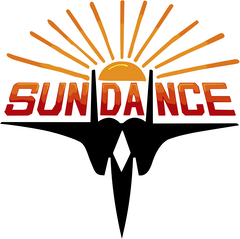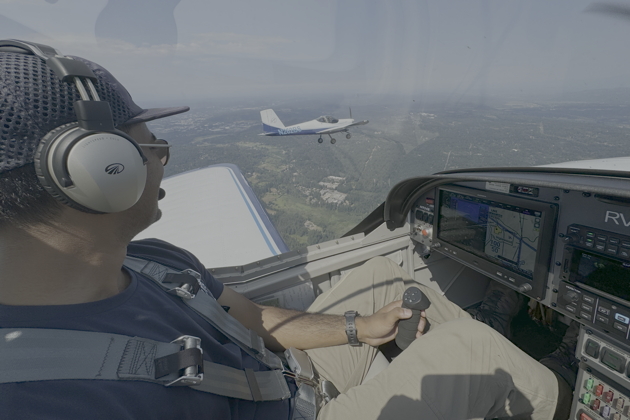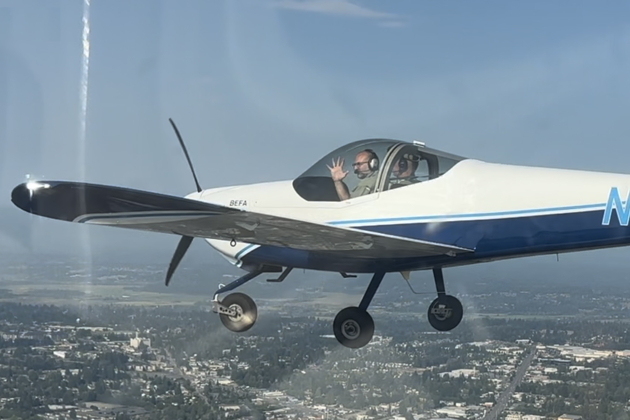FlightLog Archive
∟Aircraft Flown
BEFA RV-12 Formation Training - Aug 2024
Troy 'T-Lar' Larson contacted me in August 2021 about a plan to start a formation training course at the Boeing Employees Flying Association (BEFA) at Renton, WA. T-Lar knew of my past formation training experience, and I gladly agreed to help with training materials, ground and in-flight formation instruction. BEFA ordered two factory-built RV-12is aircraft from Van's Aircraft in Oregon, for 2023 delivery.
Troy and I flew the first RV-12 formation flight in June 2023 for a BEFA promotional video shot by aviation photographer John Parker from his Bonanza equipped with a turret ball underneath the aircraft. Progess on the actual RV-12 formation training program slowed as the BEFA board had to give their approval after reviewing the training course, the RV-12s were repositioned to Paine Field for other training, and TSA procedures at Paine Field necessitated everyone getting Paine Field access badges.
Finally, it all came together. On 17 Aug 2024, both RV-12s were re-positioned to Renton, and I helped T-Lar kickoff the formation training with a two-hour ground school with six students. I took off with Rohan Sharma with me in N954B as #2, with T-Lar and Zach Price as lead from runway 34, and climbed northeast of Lake Sammamish. We had a full formation training session with fingertip, route, echelon, cross unders, close and extended trail, pitchouts and rejoins as #2, then swapped leads, letting Rohan lead Zach through all the same maneuvers. We returned via Tiger Mountain and Lake Youngs for initial to runway 34. We debriefed the first flight, briefed our second flight to land at Paine Field. I took off with Tom Sanderson with me again in N954B as #2, with T-Lar and Greg Gohsman as lead from runway 34, flew all the same formation maneuvers as the first flight, except no extended trail, and coached Tom to fly to initial to runway 34R at Paine for two great flights.
All four of the initial students had a great time learning and experiencing the joys of formation flying. Here's an extract from student Greg Gohsman writeup, describing the day for the BEFA newsletter:
"Five of us attended the first Formation Clinic on August 17th taught by Troy Larson (Call Sign T-Lar) and Stan Kasprzyk (Sundance), both graduates of the Air Force Academy with vast experience. I was impressed at the professionalism and methods of Troy and Stan. There was much laughter in the instruction which made the two hours of ground school go by quickly. They both have lots of enthusiasm for the class. Safety was always at the forefront of every topic, and concepts were presented clearly using Powerpoint and model airplanes to show the maneuvers. Everything about Formation Flying is choreographed and that starts with the briefing. In addition to what we normally do, the flight is assigned a Call Sign and the mission is discussed in minute detail."
"I have never seen such detail as I witnessed with T-Lar and Sundance. The high-level Briefing guide includes: Administrative, Weather, Mission Plan, Fuel/Time Planning, Comm Plan in Sequence, Resource Management, Emergency procedures, and Risk Management. For example, after engine start, both aircraft get ATIS, and then switch to the Mission Frequency. Lead will call #2 to check in, and #2 simply replies “2.” Lead will command #2 to go to ground, and Lead makes all the ATC calls from here on out. “RV954B with Whiskey at BEFA, Flight of Two, East Channel Departure.”
"As part of the briefing, how to taxi, at what speed, staggered taxi option, who will be where in the run-up box, and the heading in the run-up box is planned. In the interest of safety Troy would always ask “any questions?” For Take-off, the planes will line up on the runway with the lead on the downwind side so their prop wash does not affect #2. “Renton Tower RV954B Flight of Two ready for take-off 34.” We did an interval Take-off which Lead rotates first, and then #2 will start their Take-off roll. Lead will fly slower (90 Knots) so #2 can catch up. If Lead has an engine failure, everyone stays on their side of the runway."
"The Join-up: Is it a straight-ahead join up or a turning join up? For a straight-ahead rejoin, #2 joins on the right side unless briefed otherwise. What speed will Lead fly so #2 can catch up? What is the initial turn? There are standards as part of the FAST Formation Guide."
"Next is Maneuvers Plan. Lead flies at 90 knots. Be predictable. Straight and climbing and then 10 and 20 degree turns out to the practice area. The goal of the spacing was 5 feet staggered, but I found that hard to maintain even flying with my fingertips and my fore arm resting on my leg. Just relax and do not grip the stick. Fly with your wrist and fingers, mostly fingers."
"Inbound, the lead calls the tower and requests “Initial.” The call: "RV954B with Whiskey, Flight of Two request Initial.” The Lead flies to arrive over the extended centerline a few miles out at pattern altitude, adjusting the distance out for local airspace traffic issues. The tower will confirm the pitchout point, normally over the numbers, but adjusting the pitchout point for other traffic. Once cleared, all aircraft in the flight are cleared to land."
"The first question at the debrief is “Did we do anything that was unsafe” and each aspect of the mission is dissected. I have never heard that asked by any of my previous flight instructors in 1600 hours of SEL, Glider, and Rotor wing. “Did we do anything that was unsafe?” I have never seen such joy and enthusiasm from students after a flight. The only difference between a man and a boy are the price of the toys, and the people you get to play with. Formation flying will up your skills and you will have enormous fun with a group of special pilots."
I think our students are ready for some more formation training!
 KASPRZYK
KASPRZYK


